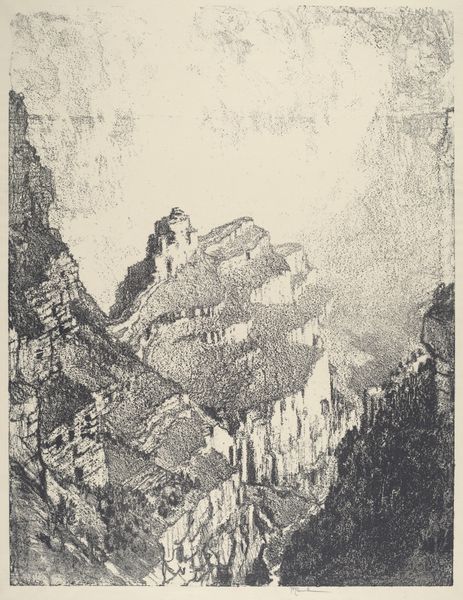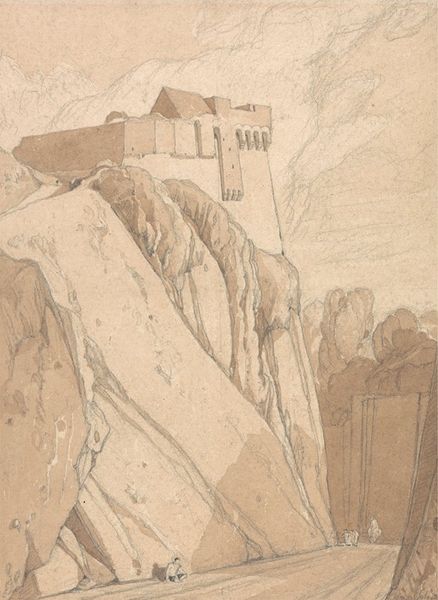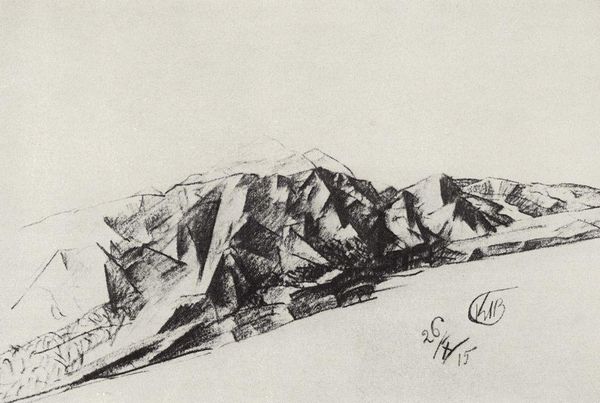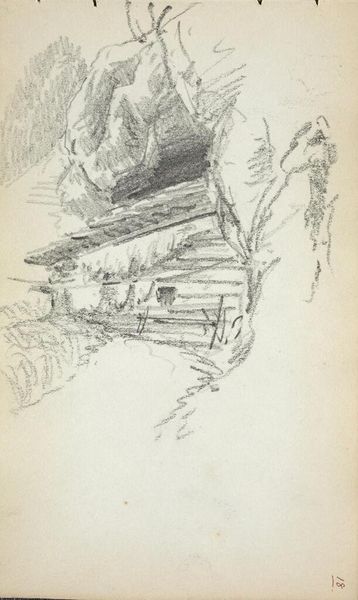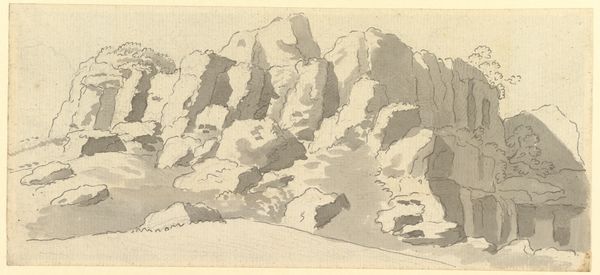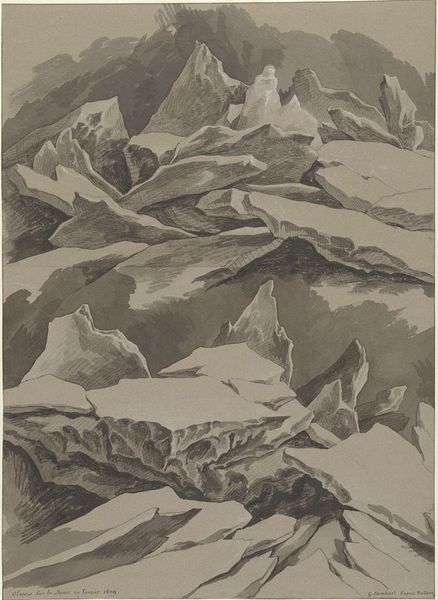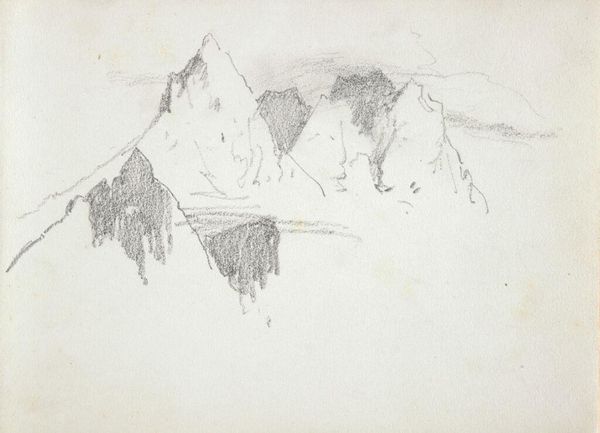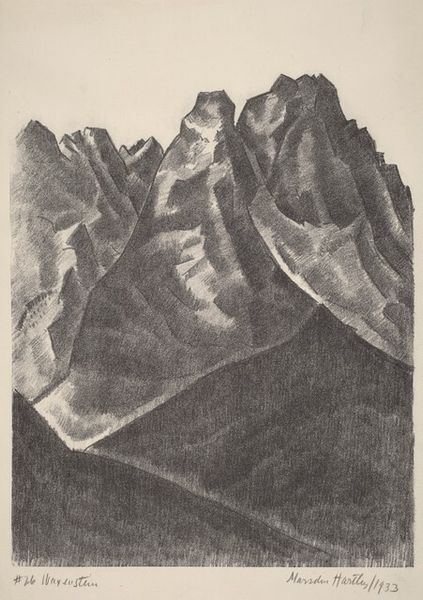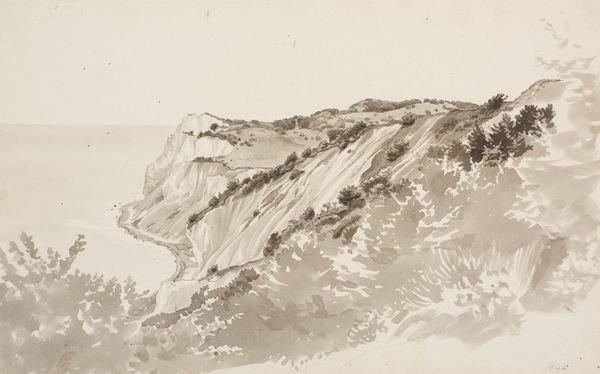
drawing, graphite
#
drawing
#
landscape
#
pencil drawing
#
graphite
#
modernism
#
realism
Copyright: Public Domain: Artvee
Curator: The looming mountain almost completely consumes the space here, a dramatic rendering executed in graphite. We're looking at Marsden Hartley's "Mountain Landscape," dating from around 1930-1935. What are your immediate thoughts on it? Editor: I'm struck by the composition—how the massive scale of the mountain dwarfs the tiny building at the base. It creates this sense of vulnerability, of the human spirit facing overwhelming nature. Curator: Absolutely, it speaks to the romantic ideal of the sublime. Think of the mountain as a primal symbol, an archetypal father figure. It stands as a monument of time, promising endurance but also demanding submission. The tiny structure is humanity, building itself against the odds of time and weather. Editor: I wonder how the social context informed this particular image. The 1930s were fraught with economic anxiety, leading people to search for stability, a refuge. And landscapes in art were certainly a source of national pride and solace. Do you think this image is nostalgic? Curator: Nostalgic perhaps, but also imbued with a distinctly modernist sensibility. Note how Hartley reduces forms to near-geometric shapes, shadows turning the image into stark contrasts of light and dark. It’s realistic and, at the same time, quite stylized. We understand his emotions toward this mountain even without a specific location reference. Editor: A good point. Hartley was an expatriate, an explorer of identity both national and personal, who returned to America in this decade, looking for, among other things, something solid, visually and emotionally, that spoke of a native culture and permanence. Curator: He sought stability by finding iconic cultural emblems. The mountains, in that sense, could almost become nationalistic symbols. It's an attempt to root oneself in the landscape, claiming an American artistic and psychic space. Editor: Seeing his mountainscape through this lens truly illuminates Hartley’s inner life and the cultural ethos of the period. Curator: Yes, and considering how these elemental shapes still stir powerful responses in us today underlines the success of this deceptively simple composition.
Comments
No comments
Be the first to comment and join the conversation on the ultimate creative platform.

